Business
Auditor General: $3.5 Billion in CEBA Loans Went to Ineligible Businesses, Recovery Efforts Lacking.
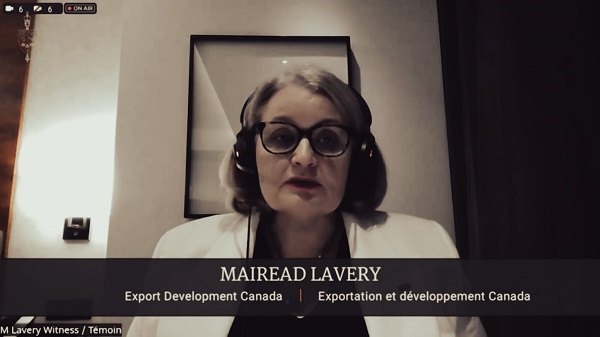
A $3.5 Billion Disaster Exposes Government Negligence, Corporate Greed, and a Total Lack of Accountability
Welcome to the latest edition of “What the Government Doesn’t Want You to Know.” Tonight, we’re talking about Canada’s Canada Emergency Business Account (CEBA) program—a pandemic-era scheme that was supposed to help struggling businesses. Instead, it’s a case study in waste, corruption, and outright negligence.
Here’s what we learned during a bombshell hearing of the Standing Committee on Public Accounts (PACP) Wednesday: $3.5 billion in taxpayer money was handed out to ineligible businesses, 92% of the contracts went to one company, Accenture, without any competitive bidding, and there’s virtually no accountability for any of it.
Let’s break it down.
$3.5 Billion Vanishes, and No One Cares
Here’s what we learned from the Auditor General: The Canada Emergency Business Account program—$49 billion handed out to almost a million small businesses during the pandemic—was a mixed bag. On the one hand, they moved fast. Great. But on the other hand, it was a fiscal train wreck in terms of accountability. And let’s be clear: “accountability” is supposed to be their job.
Now, here’s the kicker. We find out that $3.5 billion—yes, billion with a “B”—went to businesses that didn’t even qualify. That’s our money, taxpayer money, handed over to ineligible recipients. What’s their excuse? Well, they were in a rush, they say. Of course, they were. Crises always become the justification for sloppy governance and waste.
Then there’s Export Development Canada—the folks running this show. They outsourced 92% of their contracts for this program to one company, Accenture. No competitive bidding, no oversight, just one big fat sweetheart deal. And get this: Accenture essentially got to write its own terms. They gave themselves the keys to the vault. They even built systems that made EDC dependent on them until 2028. That’s right—they locked themselves in for years, turning a pandemic emergency into a lucrative, long-term cash cow.
What about the Department of Finance and Global Affairs Canada? Were they stepping in, asking tough questions, setting clear limits? Nope. They were nowhere to be found. Total accountability vacuum. And by the way, administrative costs for this program? Over $850 million. Think about that. You can’t make this stuff up.
And when the Auditor General says, “Hey, maybe you should track down that $3.5 billion and recover it,” EDC just shrugs. They “partially agree.” Partially? Imagine if you told the CRA you “partially agree” with paying your taxes. See how that goes.
Here’s the reality: This is what happens when a government prioritizes speed over basic responsibility. They let the fox guard the henhouse, and now they want us to move on and forget about it. But we shouldn’t. This isn’t just bad management—it’s a betrayal of public trust. It’s our money, and they treated it like Monopoly cash.
So, who’s going to be held accountable? Who’s going to pay the price for this colossal mess? The answer, as usual, is probably no one.
Accenture’s Sweetheart Deal
Here’s the part that should really make your blood boil: $342 million worth of CEBA contracts went to consulting giant Accenture. No competitive bidding. No oversight. Nothing. Just a blank check from EDC with your money.
And it gets worse. Accenture didn’t just get the money—they subcontracted work to themselves. That’s right, they paid themselves with your money. And here’s the kicker: EDC is locked into contracts with Accenture until 2028. So, for the next four years, taxpayers will keep paying this consulting giant, all because EDC couldn’t be bothered to shop around or demand accountability.
Lavery’s excuse? “We needed speed and expertise during the pandemic.” Speed doesn’t justify corruption. It doesn’t justify giving one private company complete control over a multi-billion-dollar program. This isn’t just incompetence; it’s a rigged system designed to enrich consultants at the expense of taxpayers.
$853 Million in Administrative Costs
Let’s talk about efficiency—or the lack thereof. The CEBA program cost $853 million to administer. That’s $300 per loan, according to EDC. Lavery called that “reasonable.” Reasonable? For what? Businesses reported that the call center EDC spent $27 million on barely worked. Think about that: $27 million for a call center where you can’t even get someone to pick up the phone.
Conservative MP Brad Vis summed it up perfectly: “For $27 million, you’d expect a call center that actually answers calls.” But instead, Canadians got more of the same—an expensive, inefficient system that’s great for consultants and terrible for everyone else.
Conservatives Demand Accountability for CEBA Mismanagement: ‘A Blank Check for Consultants’
The Conservatives didn’t hold back in yesterday’s hearing, demanding accountability for what they called a blatant misuse of taxpayer dollars. Conservative MP Brad Vis led the charge, grilling EDC President Mairead Lavery on the $3.5 billion in loans that went to ineligible businesses. He didn’t mince words, calling out the government’s failure to put basic safeguards in place. “How did this happen, and what’s being done to recover this money?” Vis asked repeatedly, only to be met with vague assurances that EDC was “working with Finance Canada” on the issue. Translation: Nothing is actually happening.
MP Kelly McCauley took aim at the $342 million handed to Accenture without a single competitive bid. “How can you justify giving 92% of CEBA contracts to one company without opening it up to competition?” he asked, pointing out that Accenture even subcontracted work to itself, effectively turning the program into a taxpayer-funded cash cow for consultants. McCauley wasn’t buying Lavery’s excuses about pandemic urgency, pointing out that this kind of procurement failure wasn’t just a one-time mistake—it was a systemic problem.
John Nater, another Conservative MP, zeroed in on the long-term fallout. He expressed outrage that EDC is locked into a contract with Accenture until 2028, ensuring that taxpayers will continue funding this flawed system for years to come. Nater demanded to know why no one at EDC or in government thought it necessary to implement oversight mechanisms once the initial rollout phase had passed. “This isn’t just about speed. It’s about accountability. Where was the oversight? Where was the plan to safeguard public money?” Nater asked.
The Conservatives’ message was clear: this wasn’t just a case of pandemic-related haste—it was a failure of leadership, oversight, and governance. They demanded consequences for those responsible and reforms to prevent similar disasters in the future. As McCauley aptly put it, “This wasn’t an emergency response. It was a blank check for consultants, and taxpayers are the ones paying the price.”
Liberals Spin CEBA Disaster as a Success: ‘Sweeping It Under the Rug
The Liberal response to this mess was as predictable as it was infuriating: deny, deflect, and downplay. Instead of addressing the core issues—like the $3.5 billion in loans to ineligible businesses or the sweetheart contracts handed to Accenture—Liberal MPs spent their time patting themselves on the back for the program’s “success” and running interference for Export Development Canada (EDC).
Take Francis Drouin, for example. He spent his time emphasizing how quickly the CEBA program got money into the hands of struggling businesses. Sure, the program distributed $49.1 billion, but at what cost? When confronted with the Auditor General’s findings about fraud, waste, and mismanagement, Drouin brushed past the hard questions and pivoted back to the pandemic. It was a textbook move: ignore the billions lost and focus on how hard the government worked. Typical.
Then there was Valerie Bradford, who followed the same script. Instead of demanding answers about why 92% of contracts went to one consulting firm without competitive bidding, she lobbed softball questions that gave EDC President Mairead Lavery the chance to repeat her excuses about “urgency” and “unprecedented circumstances.” Bradford didn’t challenge the inflated administrative costs, the useless $27 million call center, or the lack of oversight. Instead, she chose to frame the discussion as if this was all just the price of doing business in a crisis.
This wasn’t accountability. This was damage control. The Liberals weren’t there to ask hard questions—they were there to protect their narrative. To them, it doesn’t matter that taxpayers got fleeced. It doesn’t matter that consultants got rich while businesses were left waiting for answers. All that matters is spinning this disaster into a success story, no matter how far from the truth that is.
What’s most galling is the arrogance. The Liberals seem to think Canadians should be grateful for a program that wasted billions, enriched corporations, and locked taxpayers into a disastrous contract until 2028. It’s as if they expect a thank-you card for their incompetence.
Here’s the reality: the Liberal response wasn’t about addressing the scandal. It was about sweeping it under the rug. And unless Canadians demand better, this is the kind of governance they’ll keep getting: one where failure is rebranded as success, and no one ever takes responsibility for the consequences.
Final Thoughts
So, what did we learn from this so-called committee meeting? We learned that billions of taxpayer dollars can be wasted, handed out to ineligible businesses, and funneled into the pockets of consultants without anyone in government blinking an eye. We learned that accountability is a foreign concept in Ottawa, where “working on it” is the go-to excuse for incompetence and outright negligence.
Export Development Canada failed. The Department of Finance failed. The Liberals in charge failed. But here’s the kicker—no one will pay for it. Not the bureaucrats who bungled the program, not the consultants who profited from it, and certainly not the politicians who allowed this circus to happen.
Instead, we got a performance. A parade of excuses, vague promises, and shameless spin. The Conservatives tried to hold the government’s feet to the fire, but the Liberals spent their time running cover for the mess they created. And the Bloc and NDP, while occasionally landing a punch, ultimately let the bureaucrats wiggle off the hook. This wasn’t accountability; it was theater.
The CEBA program wasn’t just a failure—it was a lesson in how the system really works. When there’s no oversight, no consequences, and no urgency to fix anything, corruption and incompetence become the norm. Consultants get rich, bureaucrats get a pass, and taxpayers get the bill.
And the people running this committee? They’re part of the problem. They don’t want to fix the system because the system works perfectly for them. It rewards their friends, protects their power, and keeps them unaccountable. This wasn’t a hearing; it was a farce. And unless Canadians demand real change, this won’t be the last time their government lets them down.
So, ask yourself this: How much more are you willing to let them get away with? Because as long as you stay quiet, they’ll keep doing exactly what they did here—wasting your money, spinning their failures, and walking away without a scratch.
Please consider subscribing to The Opposition with Dan Knight .
For the full experience, upgrade your subscription.
Business
Mark Carney’s Fiscal Fantasy Will Bankrupt Canada
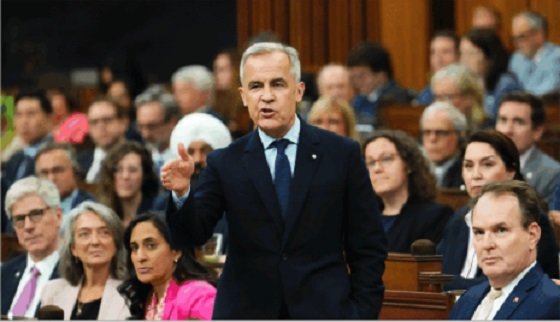
By Gwyn Morgan
Mark Carney was supposed to be the adult in the room. After nearly a decade of runaway spending under Justin Trudeau, the former central banker was presented to Canadians as a steady hand – someone who could responsibly manage the economy and restore fiscal discipline.
Instead, Carney has taken Trudeau’s recklessness and dialled it up. His government’s recently released spending plan shows an increase of 8.5 percent this fiscal year to $437.8 billion. Add in “non-budgetary spending” such as EI payouts, plus at least $49 billion just to service the burgeoning national debt and total spending in Carney’s first year in office will hit $554.5 billion.
Even if tax revenues were to remain level with last year – and they almost certainly won’t given the tariff wars ravaging Canadian industry – we are hurtling toward a deficit that could easily exceed 3 percent of GDP, and thus dwarf our meagre annual economic growth. It will only get worse. The Parliamentary Budget Officer estimates debt interest alone will consume $70 billion annually by 2029. Fitch Ratings recently warned of Canada’s “rapid and steep fiscal deterioration”, noting that if the Liberal program is implemented total federal, provincial and local debt would rise to 90 percent of GDP.
This was already a fiscal powder keg. But then Carney casually tossed in a lit match. At June’s NATO summit, he pledged to raise defence spending to 2 percent of GDP this fiscal year – to roughly $62 billion. Days later, he stunned even his own caucus by promising to match NATO’s new 5 percent target. If he and his Liberal colleagues follow through, Canada’s defence spending will balloon to the current annual equivalent of $155 billion per year. There is no plan to pay for this. It will all go on the national credit card.
This is not “responsible government.” It is economic madness.
And it’s happening amid broader economic decline. Business investment per worker – a key driver of productivity and living standards – has been shrinking since 2015. The C.D. Howe Institute warns that Canadian workers are increasingly “underequipped compared to their peers abroad,” making us less competitive and less prosperous.
The problem isn’t a lack of money; it’s a lack of discipline and vision. We’ve created a business climate that punishes investment: high taxes, sluggish regulatory processes, and politically motivated uncertainty. Carney has done nothing to reverse this. If anything, he’s making the situation worse.
Recall the 2008 global financial meltdown. Carney loves to highlight his role as Bank of Canada Governor during that time but the true credit for steering the country through the crisis belongs to then-prime minister Stephen Harper and his finance minister, Jim Flaherty. Facing the pressures of a minority Parliament, they made the tough decisions that safeguarded Canada’s fiscal foundation. Their disciplined governance is something Carney would do well to emulate.
Instead, he’s tearing down that legacy. His recent $4.3 billion aid pledge to Ukraine, made without parliamentary approval, exemplifies his careless approach. And his self-proclaimed image as the experienced technocrat who could go eyeball-to-eyeball against Trump is starting to crack. Instead of respecting Carney, Trump is almost toying with him, announcing in June, for example that the U.S. would pull out of the much-ballyhooed bilateral trade talks launched at the G7 Summit less than two weeks earlier.
Ordinary Canadians will foot the bill for Carney’s fiscal mess. The dollar has weakened. Young Canadians – already priced out of the housing market – will inherit a mountain of debt. This is not stewardship. It’s generational theft.
Some still believe Carney will pivot – that he will eventually govern sensibly. But nothing in his actions supports that hope. A leader serious about economic renewal would cancel wasteful Trudeau-era programs, streamline approvals for energy and resource projects, and offer incentives for capital investment. Instead, we’re getting more borrowing and ideological showmanship.
It’s no longer credible to say Carney is better than Trudeau. He’s worse. Trudeau at least pretended deficits were temporary. Carney has made them permanent – and more dangerous.
This is a betrayal of the fiscal stability Canadians were promised. If we care about our credit rating, our standard of living, or the future we are leaving our children, we must change course.
That begins by removing a government unwilling – or unable – to do the job.
Canada once set an economic example for others. Those days are gone. The warning signs – soaring debt, declining productivity, and diminished global standing – are everywhere. Carney’s defenders may still hope he can grow into the job. Canada cannot afford to wait and find out.
The original, full-length version of this article was recently published in C2C Journal.
Gwyn Morgan is a retired business leader who was a director of five global corporations.
Business
Carney Liberals quietly award Pfizer, Moderna nearly $400 million for new COVID shot contracts
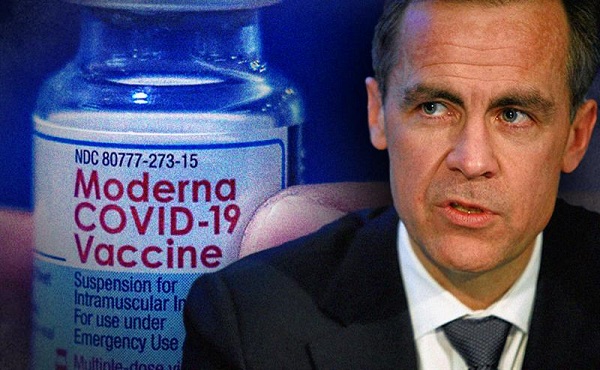
From LifeSiteNews
Carney’s Liberal government signed nearly $400 million in contracts with Pfizer and Moderna for COVID shots, despite halted booster programs and ongoing delays in compensating Canadians for jab injuries.
Prime Minister Mark Carney has awarded Pfizer and Moderna nearly $400 million in new COVID shot contracts.
On June 30th, the Liberal government quietly signed nearly $400 million contracts with vaccine companies Pfizer and Moderna for COVID jabs, despite thousands of Canadians waiting to receive compensation for COVID shot injuries.
The contracts, published on the Government of Canada website, run from June 30, 2025, until March 31, 2026. Under the contracts, taxpayers must pay $199,907,418.00 to both companies for their COVID shots.
Notably, there have been no press releases regarding the contracts on the Government of Canada website nor from Carney’s official office.
Additionally, the contracts were signed after most Canadians provinces halted their COVID booster shot programs. At the same time, many Canadians are still waiting to receive compensation from COVID shot injuries.
Canada’s Vaccine Injury Support Program (VISP) was launched in December 2020 after the Canadian government gave vaccine makers a shield from liability regarding COVID-19 jab-related injuries.
There has been a total of 3,317 claims received, of which only 234 have received payments. In December, the Canadian Department of Health warned that COVID shot injury payouts will exceed the $75 million budget.
The December memo is the last public update that Canadians have received regarding the cost of the program. However, private investigations have revealed that much of the funding is going in the pockets of administrators, not injured Canadians.
A July report by Global News discovered that Oxaro Inc., the consulting company overseeing the VISP, has received $50.6 million. Of that fund, $33.7 million has been spent on administrative costs, compared to only $16.9 million going to vaccine injured Canadians.
Furthermore, the claims do not represent the total number of Canadians injured by the allegedly “safe and effective” COVID shots, as inside memos have revealed that the Public Health Agency of Canada (PHAC) officials neglected to report all adverse effects from COVID jabs and even went as far as telling staff not to report all events.
The PHAC’s downplaying of jab injuries is of little surprise to Canadians, as a 2023 secret memo revealed that the federal government purposefully hid adverse effect so as not to alarm Canadians.
The secret memo from former Prime Minister Justin Trudeau’s Privy Council Office noted that COVID jab injuries and even deaths “have the potential to shake public confidence.”
“Adverse effects following immunization, news reports and the government’s response to them have the potential to shake public confidence in the COVID-19 vaccination rollout,” read a part of the memo titled “Testing Behaviourally Informed Messaging in Response to Severe Adverse Events Following Immunization.”
Instead of alerting the public, the secret memo suggested developing “winning communication strategies” to ensure the public did not lose confidence in the experimental injections.
Since the start of the COVID crisis, official data shows that the virus has been listed as the cause of death for less than 20 children in Canada under age 15. This is out of six million children in the age group.
The COVID jabs approved in Canada have also been associated with severe side effects, such as blood clots, rashes, miscarriages, and even heart attacks in young, healthy men.
Additionally, a recent study done by researchers with Canada-based Correlation Research in the Public Interest showed that 17 countries have found a “definite causal link” between peaks in all-cause mortality and the fast rollouts of the COVID shots, as well as boosters.
Interestingly, while the Department of Health has spent $16 million on injury payouts, the Liberal government spent $54 million COVID propaganda promoting the shot to young Canadians.
The Public Health Agency of Canada especially targeted young Canadians ages 18-24 because they “may play down the seriousness of the situation.”
-
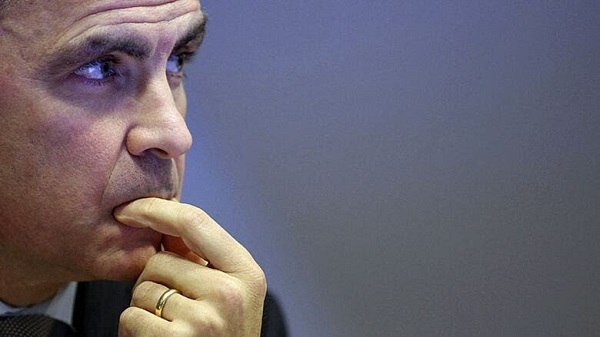
 Business1 day ago
Business1 day agoCarney government should apply lessons from 1990s in spending review
-
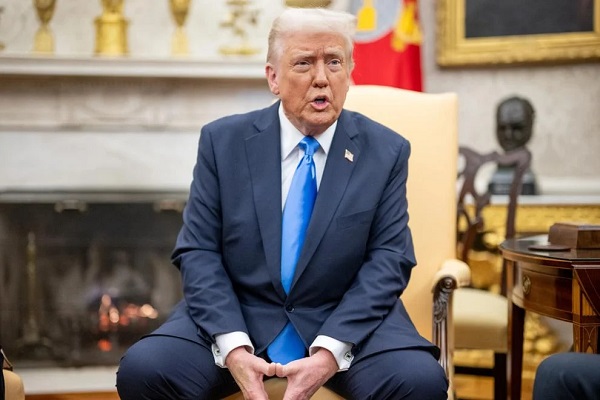
 Business1 day ago
Business1 day agoTrump to impose 30% tariff on EU, Mexico
-

 illegal immigration2 days ago
illegal immigration2 days agoICE raids California pot farm, uncovers illegal aliens and child labor
-

 Entertainment1 day ago
Entertainment1 day agoStudy finds 99% of late-night TV guests in 2025 have been liberal
-

 Energy1 day ago
Energy1 day agoLNG Export Marks Beginning Of Canadian Energy Independence
-

 Frontier Centre for Public Policy13 hours ago
Frontier Centre for Public Policy13 hours agoCanada’s New Border Bill Spies On You, Not The Bad Guys
-

 Uncategorized13 hours ago
Uncategorized13 hours agoCNN’s Shock Climate Polling Data Reinforces Trump’s Energy Agenda
-
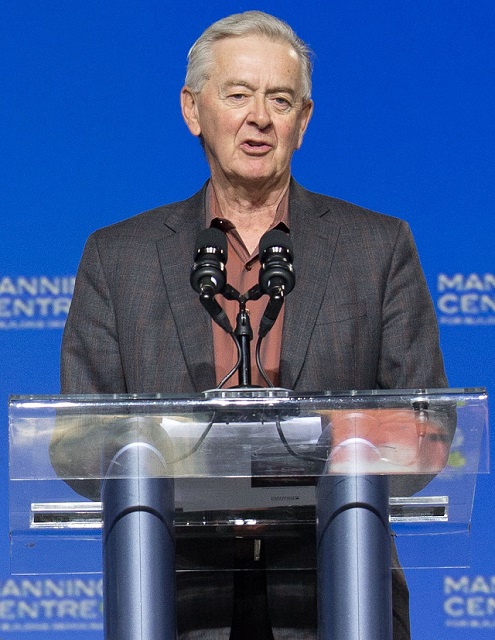
 Opinion6 hours ago
Opinion6 hours agoPreston Manning: Three Wise Men from the East, Again





